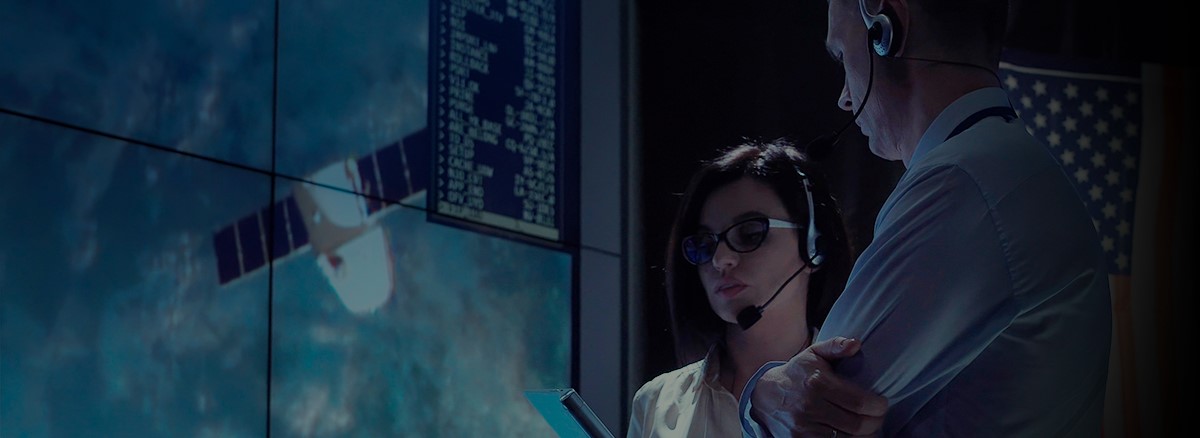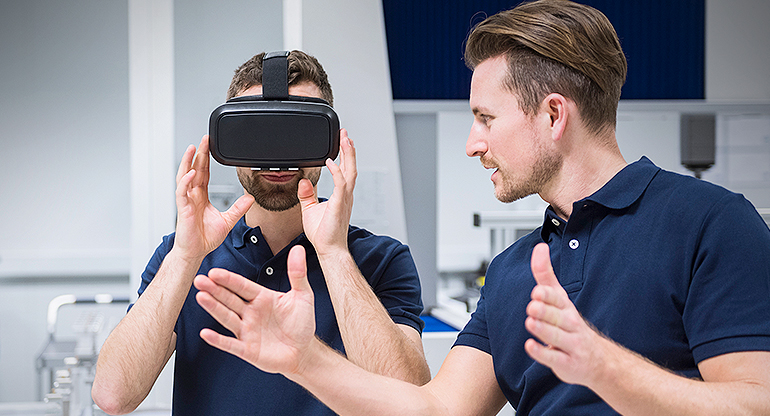
Not Your Grandfather's Training: Equipping Analysts for Success
Traditional learning modalities can't keep up with today's full-spectrum requirements

Blog Posts
This year marks the 50th anniversary of the Apollo 11 mission. With the advances we have made in those 50 years and our continually evolving relationship with space, geospatial-intelligence (GEOINT) analysts have had to evolve at an alarming rate.
Yearly training can never cover the continuously changing threats and technologies affecting analysts. Traditional learning modalities that rely on biannual, annual, or less frequent updates to courses can’t keep up with the needs of the industry. Training must adapt to the needs of these users with agility and speed.
Today’s analysts consume training in ways not available to the space pioneers of the 1960s. Innovative training solutions must address the entire spectrum of need, from classroom and self-paced training through the tools, processes, and information available once analysts are in the field and performing. Breaking training into smaller chunks that can be widely distributed, providing advanced scenario-based training, and leveraging realistic simulation contribute to a more integrated training capability and a greater likelihood for an analyst’s success. That success is reflected as mission value – making an operational difference where it counts.
Matching mix to mission
People, processes, and tools can interact to create an ideal approach. Even in 2019, competent instructors and strong mentor relationships continue to be at the core of how analysts learn. The information that analysts gain from their early instructor-led training creates the foundation for the rest of their careers.

This year marks the 50th anniversary of the Apollo 11 mission. With the advances we have made in those 50 years and our continually evolving relationship with space, geospatial-intelligence (GEOINT) analysts have had to evolve at an alarming rate.
Yearly training can never cover the continuously changing threats and technologies affecting analysts. Traditional learning modalities that rely on biannual, annual, or less frequent updates to courses can’t keep up with the needs of the industry. Training must adapt to the needs of these users with agility and speed.
Today’s analysts consume training in ways not available to the space pioneers of the 1960s. Innovative training solutions must address the entire spectrum of need, from classroom and self-paced training through the tools, processes, and information available once analysts are in the field and performing. Breaking training into smaller chunks that can be widely distributed, providing advanced scenario-based training, and leveraging realistic simulation contribute to a more integrated training capability and a greater likelihood for an analyst’s success. That success is reflected as mission value – making an operational difference where it counts.
Matching mix to mission
People, processes, and tools can interact to create an ideal approach. Even in 2019, competent instructors and strong mentor relationships continue to be at the core of how analysts learn. The information that analysts gain from their early instructor-led training creates the foundation for the rest of their careers.
Breaking training into smaller chunks gives geospatial-intelligence analysts better chances of learning success.
Guy with VR goggles
Low-cost VR and AR are valuable tools for training analysts today.
Not all training, however, needs an instructor. Computer-based training, interactive multimedia instruction, and simulator-based solutions can help students learn and retain the skills required for the tasks they need to perform. Matching the modality of training to the tasks creates greater efficiency while providing the student with an increased likelihood of success.
Creating training resources that are accessible to learners when and where they need them is also critical. In general, students remember about 30 percent of what they learn in a classroom environment. Supplementing their initial learning leads to more effective analysts with a greater probability of accomplishing their missions. Delivery can then adapt to each stage of a learner’s career to offer the right information at the right time.
Collaborating on the future
Going back to the Apollo 11 success, we saw government, private industry, and academia working together to put a man on the moon. As a member of the private industry whose team members often are embedded with government colleagues, I get to see how each of these three groups can cooperate to create the best possible and most effective analysts on the planet.
The future of analyst training is at the intersection of people, process, and tools and a collaboration of government, industry, and academia coming together to:
Work with comprehensive training and systems integrators to address the entire training life cycle.
Participate in conferences and trade shows like the GEOINT Symposium and the Interservice/Industry Training, Simulation, and Education Conference (I/ITSEC).
Leverage partnerships with organizations like the Advanced Distributed Learning Initiative.
Create and engage with communities of interest like the U.S. Geospatial Intelligence Foundation – where analysts can interact and share best practices, and industry and government can engage in what’s next.


